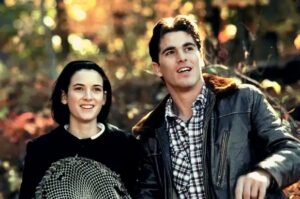Wes Anderson is a truly unique and visionary filmmaker who has a remarkable talent for creating visually stunning and emotionally resonant films. He is an American filmmaker known for his unique and highly stylised approach to filmmaking. He was born on May 1, 1969, in Houston, Texas, and studied philosophy at the University of Texas at Austin before pursuing a career in filmmaking.
Anderson first gained critical acclaim with his debut feature film, “Bottle Rocket,” which was released in 1996. He went on to direct a series of highly acclaimed films, including “Rushmore,” “The Royal Tenenbaums,” “The Life Aquatic with Steve Zissou,” “The Darjeeling Limited,” “Fantastic Mr. Fox,” “Moonrise Kingdom,” “The Grand Budapest Hotel,” and “Isle of Dogs.” His films are known for their unique and highly stylized visuals, deadpan humour, and emotionally resonant stories.
Anderson has been nominated for numerous awards throughout his career, including Academy Awards, Golden Globes, and BAFTA Awards. He has won several awards for his work, including a Silver Bear for Best Director at the Berlin International Film Festival and a Golden Globe for Best Motion Picture – Musical or Comedy for “The Grand Budapest Hotel.”
The colour palette with aesthetic appeal
Anderson’s films are known for their vivid, often dreamlike colour schemes, with each film featuring a unique and carefully curated palette of colours that are designed to convey a particular mood or emotion.
Anderson’s use of pastel colours is particularly striking, with shades of pink, blue, yellow, and green featuring prominently in his films. These colours are often muted and soft, which creates a dreamlike and nostalgic quality to the visuals. Anderson’s use of pastel colours also creates a sense of playfulness and whimsy, which is a hallmark of his films.
One reason why Anderson uses pastel colours so prominently is to create a sense of continuity and coherence throughout his films. By using a consistent colour palette, Anderson is able to tie together disparate scenes and settings and create a cohesive visual world that feels both fantastical and grounded in reality.

Timelessness
Anderson’s films have a timeless quality to them, with themes and aesthetics that appeal to both older and younger generations. His films often feature a mix of classic and contemporary music, literature, and art, which helps to bridge the gap between different generations and cultures.
Star Cast and the Quirky Characters
Additionally, Anderson’s films often feature an all-star cast of actors, which has helped to broaden his appeal and attract a new generation of fans. His collaborations with actors such as Adrien Brody, Bill Murray, Tilda Swinton, and Saoirse Ronan have become iconic, and his films have helped to launch the careers of many young actors.
His works are filled with memorable characters, quirky humour, and a sense of nostalgia that draws audiences in and immerses them in the world he creates.

The Artistic Style
Wes Anderson is known for his unique and distinctive style of filmmaking. Through his films, Anderson demonstrates the art of filmmaking as a creative and collaborative process that requires a deep understanding of visual storytelling, character development, and the ability to balance both style and substance in service of the story. His work continues to inspire and influence other filmmakers and has helped to redefine the boundaries of contemporary cinema.
Some of the defining characteristics of his style include:
- Quirky characters: Anderson’s films often feature eccentric, idiosyncratic characters who don’t quite fit into society’s norms. They are usually played by well-known actors and actresses who bring their own unique personalities to the roles.
- Symmetrical framing: Anderson’s films are often visually striking, with perfectly symmetrical shots and carefully composed frames. He often uses a static camera and keeps the action centered within the frame.
- Vintage aesthetics: Anderson’s films are often set in the past or in a nostalgic version of the present, and he incorporates vintage props, costumes, and music to create a distinct aesthetic. His use of colour and production design is often very deliberate, with particular attention to detail.
- Deadpan humour: Anderson’s films often have a dry, deadpan sense of humour that plays off of the quirky characters and situations. The humour is often subtle and ironic and delivered with a straight face by the actors.
- Precise editing: Anderson’s films are often edited in a very precise, rhythmic way, with particular attention to detail and timing. He often uses quick cuts, montages, and cross-cutting to create a sense of momentum and energy.
Wes Anderson has developed a dedicated fanbase who appreciates his style which is highly influenced by art, recognisable daily activities, raw feelings and basic human nature.
Anderson’s films are not just beautifully crafted, they are also deeply emotional, with characters that are richly developed and stories that are filled with heart and soul. His work is a testament to the art of filmmaking as a form of creative expression that has the power to move, inspire, and connect people on a profound level. Through his films, Anderson reminds us of the beauty and magic that can be found in the world around us, and his legacy as a filmmaker will continue to inspire and touch the hearts of audiences for generations to come.
“We’re all different, but there’s something kind of fantastic about that, isn’t there?” – Ash (Fantastic Mr. Fox movie)

